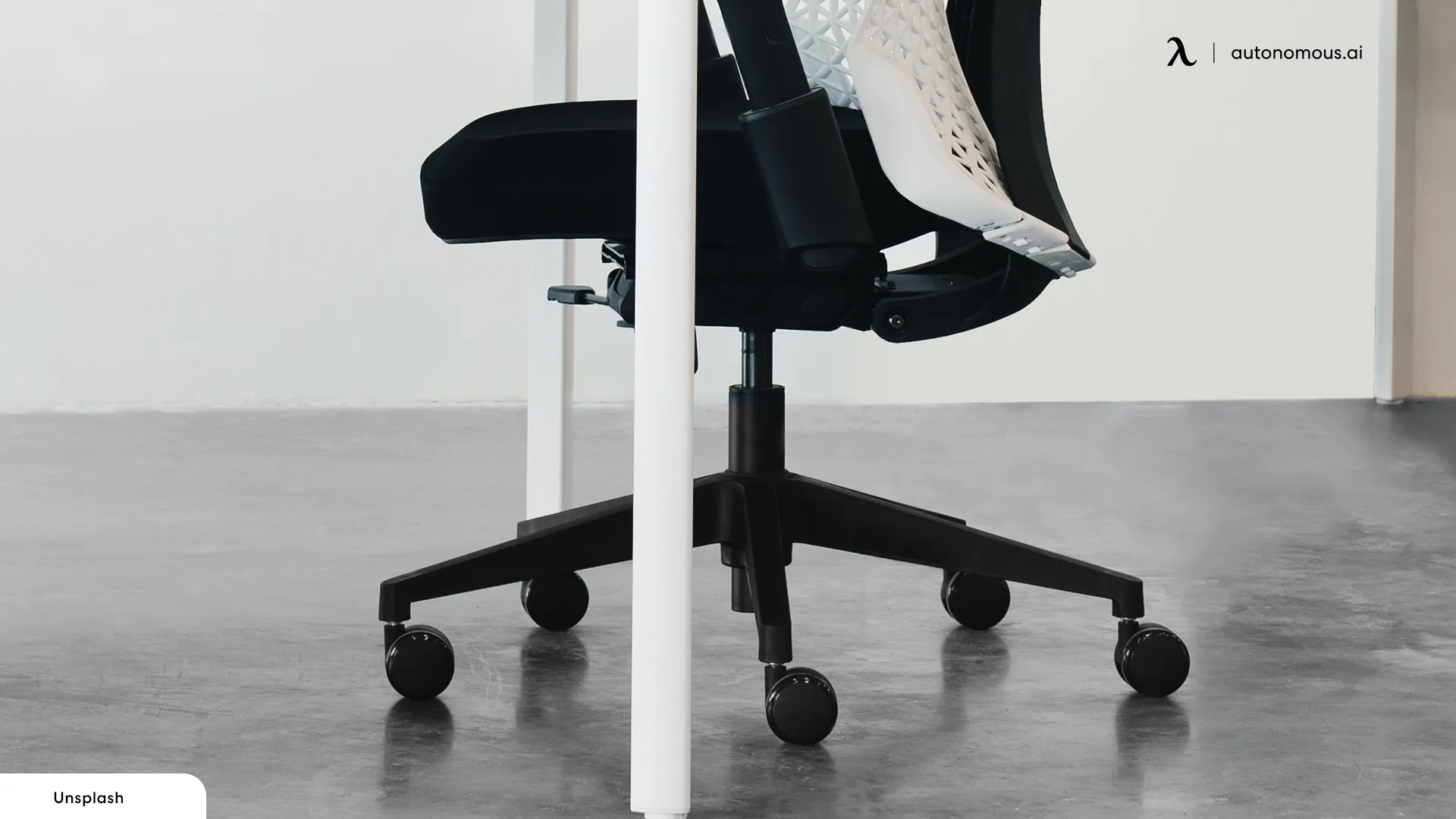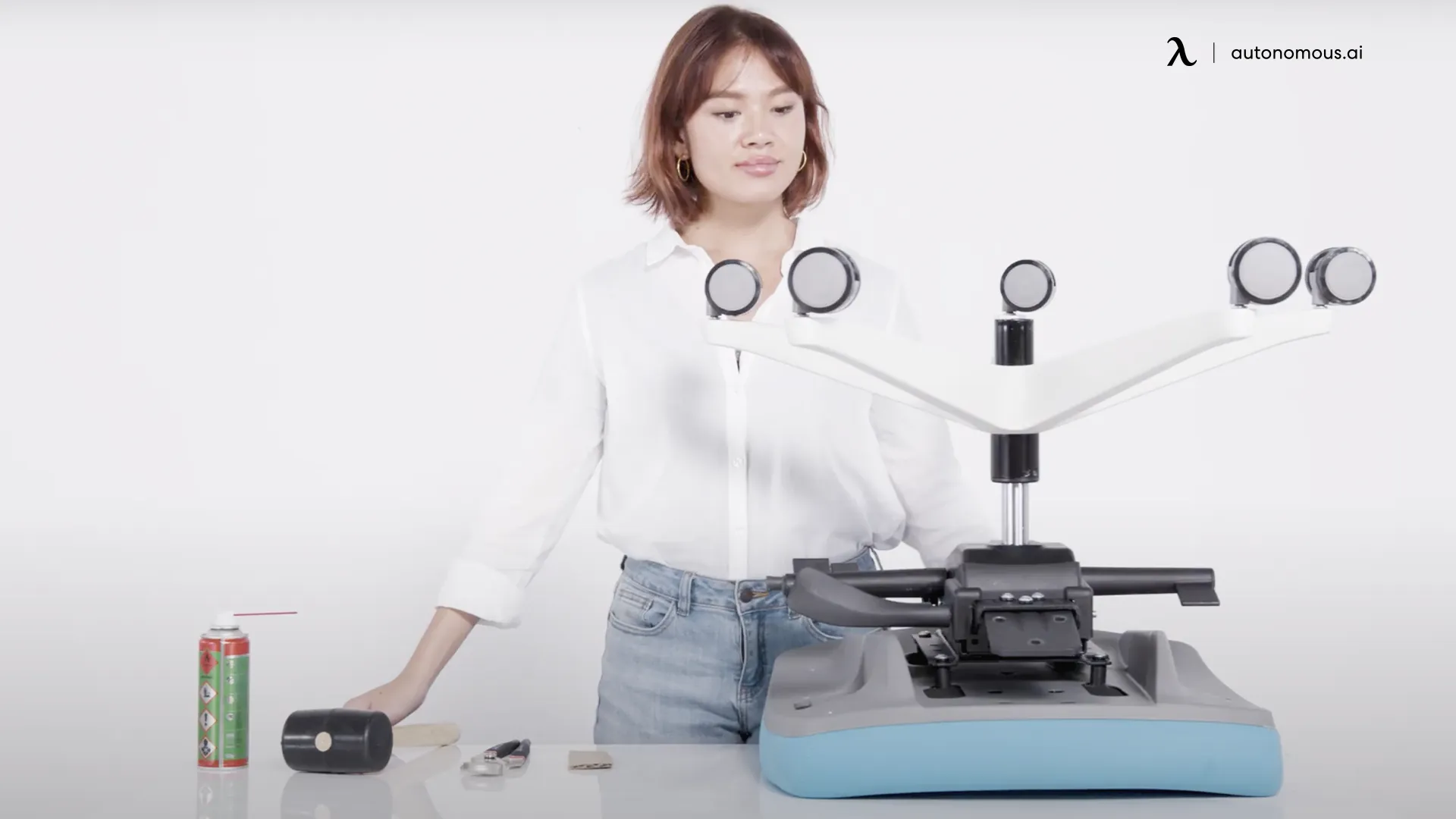
How to Remove Office Chair Wheels? Comprehensive Guide
Uneven rolling occurs when the wheels on the caster wear down. Replacing the caster wheels can be done in a matter of minutes, making it unnecessary to replace the whole chair. Since the casters don't have a fastener attached, you can easily detach them if you apply enough force. Sometimes, you can remove the casters manually. Do you wish to do the same? These instructions show you how to take the wheels off the office chair and replace them effectively.
Why Replace Office Chair Wheels?
Common Issues with Casters:
- Floor Scratching: Caster wheels can scratch up hardwood floors or leave marks on carpets.
- Immobility: Wheels that no longer roll properly, making the chair difficult to move.
- Damage: Cracked or broken casters that can affect chair stability and usability.

Replacing the wheels can solve these issues without the need for a new chair.
Step-by-Step Guide to Removing Office Chair Wheels
1. Prepare the Tools and Area:
- Tools Needed: Pry bar, flat head screwdriver, work gloves or a towel for better grip, lubricating oil, and optionally a rubber hammer.
- Prepare the Area: Turn the office chair upside down and spread a thick towel or old blanket on the floor to prevent scratches and chips. Ensure the chair is in a stable position to avoid falls during the removal process.
2. Determine the Type of Casters:
- Inspection: Look at the caster wheels to determine how they are installed. Some casters are installed using screws, while others use stems. Understanding the caster type helps in applying the right removal technique.
3. Remove Threaded Casters:
- Twist Method: If your chair has threaded (screw) casters, twist them clockwise to loosen and remove them.
4. Remove Grip Stem Casters:
- Lubrication: Apply a few drops of lubricating oil onto the caster stem where it inserts into the chair.
- Manual Removal: Hold onto the leg of the chair with one hand and grip the caster wheel with the other. Pull the wheel out using a bit of force.
- Using Tools: If the wheel doesn’t move, use a flat head screwdriver to gently pry the caster out. You can also use a rubber hammer to tap the screwdriver for additional leverage.
5. Dealing with Stuck Casters:
- Improvised Tools: If the caster is rusted or stuck, use tools like a kitchen knife, scissors, or a pry bar to lift the wheel out of the socket.
- Screwdriver Method: Insert a flathead screwdriver between the wheel and the base of the chair. Push gently and slowly until the caster begins to move. Adjust the angle if necessary to get more leverage.
- Pry Bar Method: Position the pry bar over the stem and pull the caster wheel upward. Apply oil if needed and let it sit for a few hours before trying again.

Adding the New Casters
1. Verify the Stem Type and Size:
- Stem Types: Grip ring, grip neck, threaded, plate, or u-bracket.
- Measurements: Measure the diameter and length of the stem using calipers, a ruler, or a tape measure to ensure compatibility with your chair.
2. Install the New Casters:
- Grip Stem Casters: Push the new office chair wheels into the chair leg’s hole until you hear a click, indicating they are secure. Use lubricant or a rubber mallet if needed.
- Threaded Casters: Screw the new casters into the chair’s leg until you feel resistance.
3. Test the Chair:
- Stability Check: Place the chair upright, apply pressure, and sit in it to ensure all wheels are secure and the chair rolls smoothly.

When to Replace Your Casters
Signs for Replacement:
- Cracked, broken, or stuck casters: Casters in poor condition should be replaced to prevent damage to the chair and floor.
- Floor Damage: Casters that leave streaks or damage the floor need immediate replacement.
- Hair and Debris: Casters tangled with hair and debris can affect mobility and should be cleaned or replaced.
Benefits of Replacing Casters:
- Prevent Further Damage: Replacing faulty casters can prevent additional damage to the chair and flooring.
- Enhanced Mobility: New casters ensure smooth movement and reduce noise.
- Safety: Reduces the risk of accidents caused by unstable or immobile chairs.
Additional Tips to Prevent Rolling Issues
1. Consider Locking Casters:
- Lock Mechanism: Locks hold the wheels in place, preventing unwanted rolling, regardless of floor slope or wheel polish.
2. Use an Area Rug:
- Grooved or Fiber Area Rug: Helps anchor the wheels in place, especially on slanted or glossy floors.
- Rubber Underpad: Prevents the rug from sliding on smooth floors.
3. Place Stoppers Under Casters:
- Stopper Size: Ensure the stopper fits the casters properly to prevent movement and protect the floor.
4. Remove Office Chair Wheels:
- Alternative to Rolling: Consider replacing casters with glide stems for more stability if rolling issues persist.

How to Choose the Right Replacement Casters
Factors to Consider:
- Wheel Diameter: Common sizes are 2”, 2.5”, and 3”. Larger wheels roll more easily on carpets, while smaller wheels may be better for hard floors.
- Caster Type: Single-wheel casters are simpler and more reliable, while twin-wheel casters distribute weight more evenly.
- Material: Polyurethane is ideal for smooth motion and minimal floor damage, suitable for various flooring types.
- Floor Compatibility: Choose casters based on the flooring type—carpets, hardwood, tiles, etc.
Conclusion
Replacing office chair casters is a simple and cost-effective way to improve your chair's performance and protect your floors. Whether dealing with worn-out wheels or looking for an upgrade, following these steps ensures a smooth and successful replacement process. Regular maintenance and timely replacement of casters can extend the life of your office chair and enhance your workspace's functionality and safety.
Stay connected with us!
Subscribe to our weekly updates to stay in the loop about our latest innovations and community news!
Interested in a Link Placement?
.svg)
.svg)



/https://storage.googleapis.com/s3-autonomous-upgrade-3/production/ecm/230914/bulk-order-sep-2023-720x1200-CTA-min.jpg)

/https://storage.googleapis.com/s3-autonomous-upgrade-3/static/upload/images/new_post_author/admin-1.png)